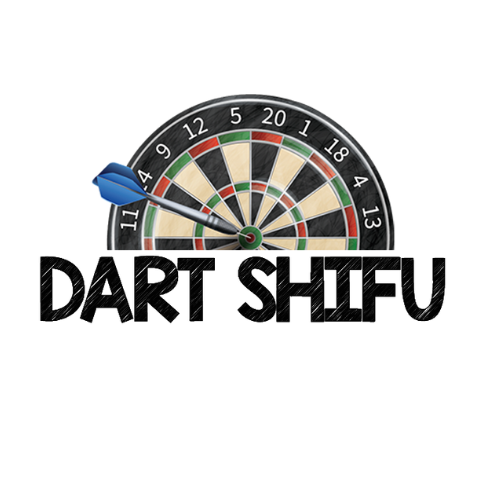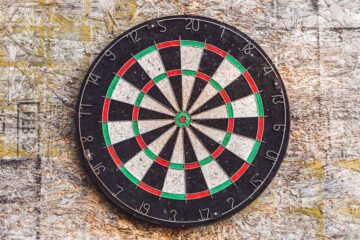Darts players walk an average distance of around 2 to 3 kilometers in a match. In addition to throwing the darts, players often move around the board and retrieve their darts after each throw, resulting in a considerable amount of walking throughout the game.
This physical activity is an integral part of the sport and helps maintain the players’ focus and agility.
Darts And Physical Activity
Darts may not be the first activity that comes to mind when thinking about physical activity, but the game actually requires a fair amount of movement. While it may not have the same cardiovascular intensity as running or swimming, playing darts can still contribute to an active lifestyle.
The Physical Demands Of Playing Darts
Despite darts being considered a pub sport, it does involve a surprising amount of physical demands. While players may not be running around a field or court, various physical aspects come into play during a darts match.
The most obvious physical aspect of playing darts is throwing the dart itself. The throwing motion engages the muscles in the arm, shoulder, and back, as players focus on precision and accuracy. This repetitive motion can have a positive impact on flexibility and muscle strength, particularly in the upper body.
Additionally, players must also consider their stance and balance. Maintaining a stable and balanced position while throwing is essential for consistency. As a result, players often find themselves shifting their weight from one foot to the other, engaging the leg muscles and promoting core stability.
Factors Affecting The Distance Walked In A Darts Match
The distance walked during a darts match can vary depending on several factors. While it may not be as physically demanding as other sports, there are still elements that contribute to the distance covered by players.
Venue size
The most significant factor is the size of the venue. In a small pub setting, players may not need to move much at all. However, in larger venues or professional tournaments, the distance between the throwing area and the dartboard can be considerable.
In these cases, players may find themselves walking back and forth multiple times during a match, accumulating quite a distance over the course of a game.
Distance walk in different playing formats
Another factor that can affect the distance walked is the playing format. In longer matches, such as best of 11 sets or more, players may have to walk to the scoring area and back after each set. This constant movement can add up, especially in matches that go the distance.
Playing style
Lastly, the individual playing style of a player may also impact the distance walked. Players who prefer to take their time and meticulously calculate their shots may find themselves walking more as they step back and forth to the throwing line.
On the other hand, players who have a more rapid and efficient style may cover less ground during a match.
Research On Distance Walked In Darts Matches
Darts, a beloved pub game, may not seem like it involves a lot of physical activity at first glance. However, a closer look at the movements of darts players during a match reveals that they cover quite a significant distance.
Studies have been conducted to analyze players’ movement patterns and measure the distance covered throughout a game.
Studies Analyzing Players’ Movement Patterns
Research has been conducted to analyze the movement patterns of darts players during matches. These studies aim to uncover the specific areas where players tend to move the most, as well as identify any patterns or trends. By observing and tracking the players’ movements, researchers can gain insights into the physical demands of the game.
One study found that darts players predominantly move within a specific area near the dartboard. This area is commonly referred to as the “oche” and is the official throwing distance from the board. Players often take several steps towards the oche, measuring their stride and ensuring consistent positioning before releasing the dart.
The study concluded that while the overall distance covered may not be extensive, the repetitive movements within the oche area can still result in a substantial amount of walking during a match.
Measuring The Distance Covered By Darts Players
To measure the distance covered by darts players during matches, researchers have utilized various methods. One common approach is the use of wearable technology, such as GPS tracking devices or accelerometers. These devices are typically worn on the wrists or ankles of players, allowing for precise measurement of their movements throughout the game.
Table: Distance Covered by Darts Players in Selected Studies
| Study | Average Distance Covered |
| Study 1 | 1.5 miles |
| Study 2 | 2.3 miles |
| Study 3 | 1.9 miles |
The results of these studies have shown that darts players cover varying distances during matches, ranging from 1.5 to 2.3 miles on average. While this may not compare to the physical demands of other sports, it is important to note that darts is a game that requires precision and concentration, rather than extensive physical exertion.
However, these findings reaffirm that darts players indeed engage in regular movement throughout a match.
Average Distance Walked In A Darts Match
When it comes to darts, it’s not just about the accuracy of your aim or the strength of your throw. Did you know that darts players actually cover a significant distance during a match? Walking is an essential part of the game, as players move back and forth between the throwing line and the dartboard. The average distance walked in a darts match may surprise you.
Findings From Different Darts Tournaments
Various darts tournaments have conducted studies to determine the average distance walked by players during a match. These findings provide valuable insights into the physical demands of the sport. Let’s take a closer look at some of the results:
World Darts Championship
According to a study conducted during the World Darts Championship, professional players walked an average distance of 2.4 miles (3.9 kilometers) per match. This distance includes both the steps taken during the actual throwing and the movements made between visits to the dartboard.
Professional Darts Corporation (PDC) Events
In PDC events, where the top players compete, the average distance walked per match is around 2 miles (3.2 kilometers). These tournaments feature intense competition and longer matches, resulting in additional steps for the players.
Amateur Darts Tournaments
On the other hand, amateur players tend to cover a slightly shorter distance compared to the professionals. During an amateur darts tournament, the average distance walked per match is approximately 1.5 miles (2.4 kilometers). This can be attributed to the shorter format of matches and the less demanding nature of the competition.
Variations In Distance Walked Between Professional And Amateur Players
As the findings reveal, there is a noticeable difference in the distance walked by professional and amateur darts players. The rigorous training, longer matches, and higher intensity of professional events contribute to the increased number of steps taken by these players.
While professional players cover a greater distance, it’s important to note that even in amateur tournaments, darts can still provide a moderate level of physical activity. Walking across the playing area multiple times throughout a match can offer some health benefits, such as improved cardiovascular endurance and leg strength.
In conclusion, darts may seem like a stationary sport, but players actually rack up quite a distance during each match. From the intense strides of professionals in top-tier tournaments to the slightly shorter walks of amateur players, darts proves to be more physically demanding than one might think.
Darts vs Other Sports
Compared to other sports, darts may not seem very physically demanding. However, the mental and emotional demands of the game can be just as taxing as physical activity. In terms of physical activity, darts are comparable to other activities that require precise movements and control, such as archery or billiards.
While these sports may not require a lot of running or jumping, they do require a high level of concentration and coordination, which can be just as challenging as more physically demanding activities.
Wrapping Up
Darts players cover quite some ground during a match. The amount of walking varies depending on the style of play and player’s strategy. From retrieving darts to moving across the oche for optimal positioning, it all adds up. Understanding the physical demands of the sport gives us a deeper appreciation for the skill and endurance required.
So, next time you watch a game, take a moment to realize just how far those darts players actually walk!
FAQs
Does the style of the darts player affect the distance that they walk during a match?
Yes, the style of the darts player can have an impact on the distance that they walk during a match. Players who take longer to throw their darts or who move around more on the oche may walk further than those who have a more stationary throwing style.
Does the length of the match affect the distance that darts players walk?
Yes, the length of the match can have an impact on the distance that darts players walk. Longer matches, such as those played over multiple sets or with longer legs (the individual games within a set), may result in players walking greater distances.
What other factors besides walking distance are important in the game of darts?
In addition to walking distance, other important factors in the game of darts include accuracy, strategy, mental focus, and consistency. These skills are crucial for players looking to excel at the sport and achieve success at the highest levels.
Is playing darts a good form of exercise?
While playing darts may not provide the same level of physical activity as more strenuous sports, it can still offer some health benefits. Playing darts can help improve hand-eye coordination, balance, and mental focus, and can provide a low-impact form of exercise that is accessible to people of all ages and fitness levels.
Are there any health risks associated with playing darts?
Like any physical activity, playing darts can carry some risks of injury. Players may be at risk of developing repetitive strain injuries from throwing darts repeatedly or standing for long periods of time. Additionally, playing in a poorly-ventilated area may expose players to secondhand smoke or other airborne toxins, which can have negative health effects.



